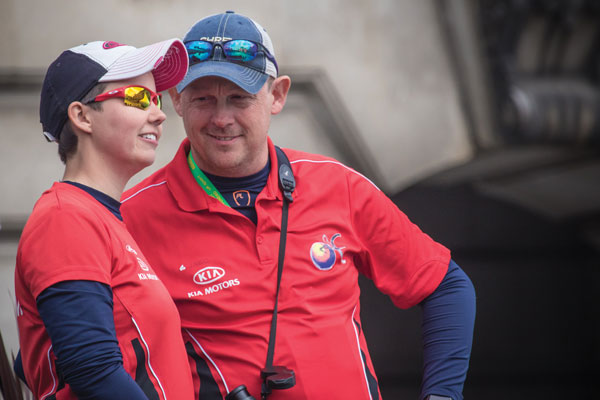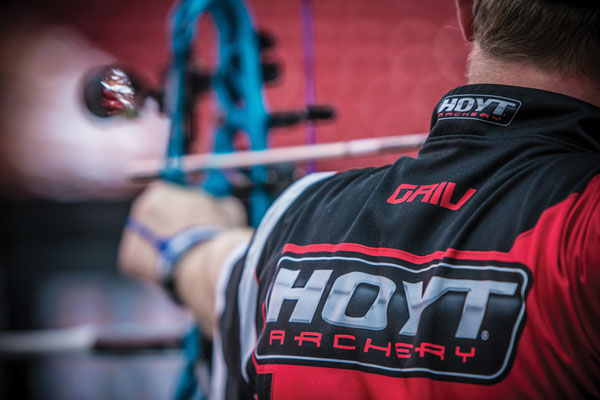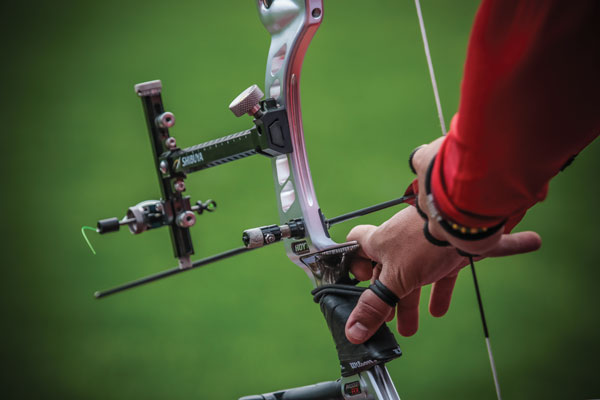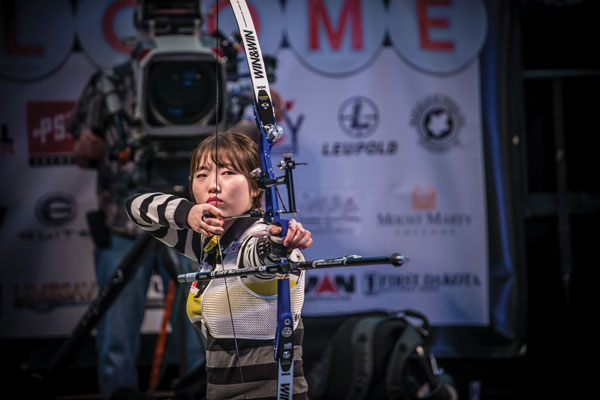What a coach sees… Alistair Whittingham reveals the most common technique issues he encounters in his capacity as a coach

Alistair has coached archers at all levels, and says the same technique problems crop up again and again
The biggest issue for anyone who shoots is knowing the difference between a cause and a symptom when looking at technique errors. Many individuals, and coaches, see the symptoms and try to cure them, and although this will often give an effective quick fix, it is the underlying and more fundamental issues that need to be addressed. This understanding of underlying causes actually makes teaching, and learning for that matter, a lot easier and standard. People will often talk about individual differences between archers, in that that we are not all built the same and that one lesson does not fit all. These individual differences are, however, all fairly superficial “symptoms”, which can often be traced back to a simple technique failure.
As an example, let us look at the most commonly-cited and fixated upon technique error in archery of any discipline: a poorly positioned front shoulder. This tends to be seen as the front shoulder “climbing up” during the draw, anchor or execution. It is easily seen by the coach or by the archer in pictures of themselves, and they often begin to try and fix that specific area, generally with some good old “housewives tales” and cures. Cries of “lower the front shoulder”, by using some muscle group that even a professional body builder would struggle to locate and activate, can lead to strange and painful-looking contortions.

Looking ‘in front’ of the symptom can reveal the source of the problem – such as looking at the bow hand in the case of a problem front shoulder
This poor position of the front shoulder is primarily a symptom of front arm alignment, the bow hand is in line with the front shoulder rather than being four or five inches to the right (on a right handed archer) and the bow arm moves during draw or execution to try and make it better. This poor front arm position may well lead to the bow hand pressure moving on the grip and the bow arm flexing during the draw. Paying attention to this is generally the cure for all front shoulder issues without going near the specific area. A good rule of thumb is to look for an error of technique “in front of the symptom”, so in this case a poor front shoulder is likely to be a symptom of a poor front arm. I am always surprised by people looking for a cure “behind the symptom”, which just seems counter-intuitive.
So we can start to see that there is something approaching a standard one-size-fits-all technique that is the basis for all archers, and it is a failing in this that leads to the myriad of symptoms that get treated.
Whether shooting recurve or compound the archer only interacts directly with the bow in two places – their hands. 90 per cent of all errors I see are driven by poor bow hand and wrist position – though this is a very simple and straightforward area to work on. The hand should be placed on the grip so that the point of pressure is on a boney rather than fleshy area, and so that the wrist can line up behind this contact.

Archers only touch the bow in two places – their hands – and most of the errors Alistair sees can be traced back to these
In this scenario, there will be no movement of the wrist and therefore change in the location of this pressure point through the draw. All the bones of the bow arm will line up behind this. A good test as to whether you have got this correct is take off your finger sling (recurve or compound) place the first and second fingers in front of the middle of the riser, with a 5mm gap between them and the riser, and shoot without moving your wrist (if you do this the bow will not end up on the floor after the shot).
Excessive wrist and point of pressure on the grip movement will leave you with a bow lying at your feet after the shot. For recurve shooters an error in this front arm will lead to an inability to make full draw (so test how good you are by shooting a few dozen scored arrows without a clicker; it should be comparable to your clicker score, but remember without a clicker you are only making a full draw position then loosing), and this is also well looked at with an Astra shot trainer or similar. A good enough front hand and arm position will give you a good anchor point, and the back end execution will be solid.
For the back end execution, imagine what position you would achieve if someone cut the string while you were at full draw. If the string was cut at full draw you should end up with a clean movement of the drawing hand about three inches back from the anchor point with your release hand in contact with your neck just behind your jaw axis. Anything different to this means that you are exerting unnecessary forces to execute the shot (punching with a release aid, or dragging through a clicker with a recurve). Again, this is shown up with a shot trainer for the recurve archers, a piece of kit I am always surprised so few own.

A correct bow hand position will see all the bones of the arm line up behind it through to the shoulder
Let me be totally clear about the message I am trying to get across: “If it looks right, it is right. Excessive idiosyncrasies can not be excused or allowed to happen.” To this end, archery technique really is a one-size-fits-all movement.
Finally, a brief discussion of the difference between drill work and cures. Drill training in any performance – from sports to scales on a musical instrument – are there to show errors, not cure them. If you cannot complete a drill successfully then your technique is not good enough, and continuing to do that drill with a bad outcome will not teach you anything of the skill. A cure for a poor front shoulder will be found by looking at the bow hand position and front arm location; while shooting without a clicker or with a shot trainer will allow the individual to identify whether they are doing this well enough; if they can’t perform the task with at least achieving the fundamental outcome no amount of drill work will cure the issue.
So, to cure technique issues, firstly, identify where the fault is and work on that, not the symptom of the fault. Secondly, test how good the technique is with drill work. Remember, if it looks wrong it probably is, meaning it’s probably not reliable or effective as a technique either.
This article originally appeared in the issue 115 of Bow International magazine. For more great content like this, subscribe today at our secure online store www.myfavouritemagazines.co.uk

